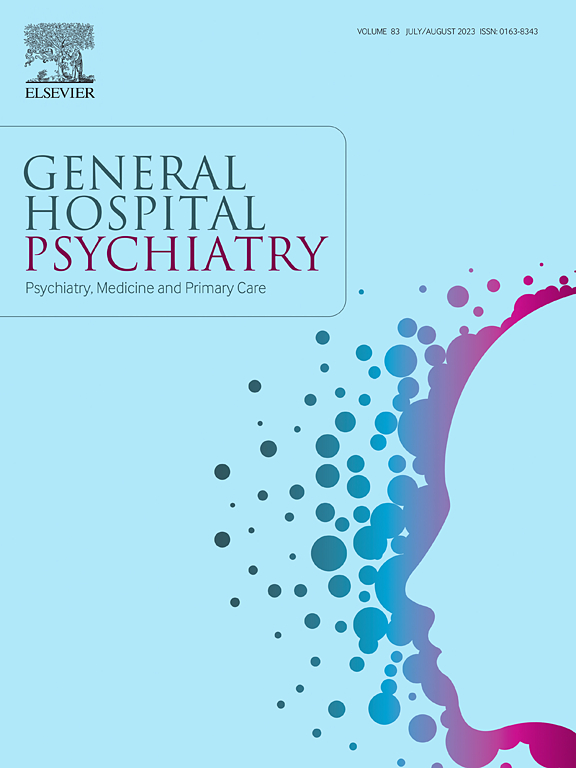Post-stroke depression risk prediction models in stroke patients: A systematic review
IF 3.7
2区 医学
Q1 PSYCHIATRY
引用次数: 0
Abstract
Background
Post-stroke depression (PSD) is a severe complication that significantly affects patients' prognosis. It is widely believed that risk prediction models can be employed to identify patients early and develop intervention measures. Although the number of PSD prediction models has gradually increased, the quality and applicability of these models remain unclear.
Objective
This study aims to systematically review the published research on risk prediction models for PSD.
Methods
A computer search was conducted in databases including CNKI, WanFang Data, VIP, CBM, PubMed, EMbase, Web of Science, CINAHL, and The Cochrane Library, collecting studies on PSD risk prediction models. The search time frame spanned from the establishment of these databases to March 1, 2025. Two researchers independently screened the literature, extracted data, and assessed the risk of bias for the included studies before performing a qualitative systematic review.
Results
A total of 12 studies were included, comprising 13 risk prediction models. The area under the curve (AUC) or C-index of these models ranged from 0.726 to 0.928. The risk of bias assessment indicated that all the included models were at high risk, with three models demonstrating poor applicability. The most commonly included predictors in the models were, in order: Barthel Index, NIHSS score, age, hypertension, and education level.
Conclusion
Overall, the predictive performance of PSD risk prediction models is promising. However, limitations remain that require further optimization, including issues related to data sources, study design, and data processing. Future research should prioritize the external validation of existing prediction models or the development of higher-quality models with enhanced applicability.
卒中患者卒中后抑郁风险预测模型:系统综述
脑卒中后抑郁(PSD)是严重影响患者预后的并发症。人们普遍认为,利用风险预测模型可以早期识别患者并制定干预措施。虽然PSD预测模型的数量逐渐增加,但这些模型的质量和适用性仍然不清楚。目的对已发表的PSD风险预测模型进行系统综述。方法计算机检索CNKI、万方数据、VIP、CBM、PubMed、EMbase、Web of Science、CINAHL、Cochrane Library等数据库,收集有关PSD风险预测模型的研究。搜索时间范围从这些数据库建立到2025年3月1日。在进行定性系统评价之前,两名研究人员独立筛选文献、提取数据并评估纳入研究的偏倚风险。结果共纳入12项研究,包括13种风险预测模型。这些模型的曲线下面积(AUC)或c指数在0.726 ~ 0.928之间。偏倚风险评估结果显示,纳入的模型均为高风险模型,其中3个模型适用性较差。模型中最常见的预测因子依次为:Barthel指数、NIHSS评分、年龄、高血压和受教育程度。结论总体而言,PSD风险预测模型的预测效果良好。然而,局限性仍然存在,需要进一步优化,包括与数据源、研究设计和数据处理相关的问题。未来的研究应优先考虑对现有预测模型进行外部验证,或开发更高质量、更强适用性的模型。
本文章由计算机程序翻译,如有差异,请以英文原文为准。
求助全文
约1分钟内获得全文
求助全文
来源期刊

General hospital psychiatry
医学-精神病学
CiteScore
9.60
自引率
2.90%
发文量
125
审稿时长
20 days
期刊介绍:
General Hospital Psychiatry explores the many linkages among psychiatry, medicine, and primary care. In emphasizing a biopsychosocial approach to illness and health, the journal provides a forum for professionals with clinical, academic, and research interests in psychiatry''s role in the mainstream of medicine.
 求助内容:
求助内容: 应助结果提醒方式:
应助结果提醒方式:


